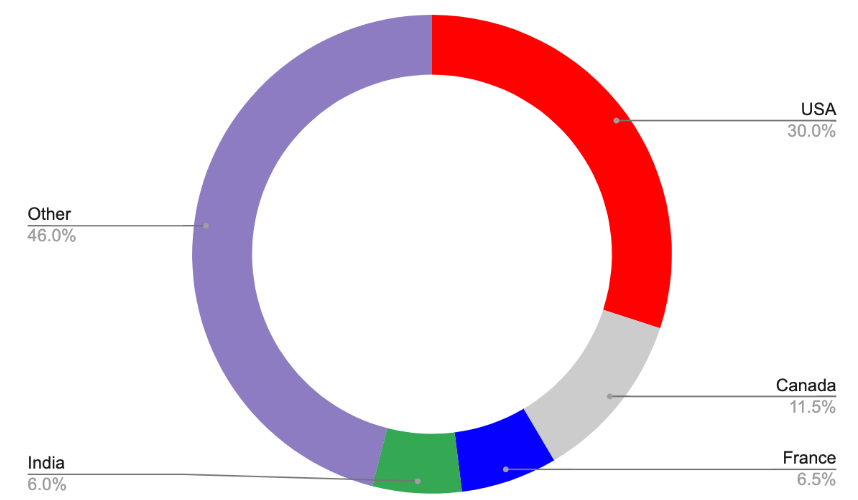Last updated at Fri, 15 Nov 2024 21:08:09 GMT
Executive Summary
Rapid7 has observed an ongoing malware campaign involving a new version of LodaRAT. This version possesses the ability to steal cookies and passwords from Microsoft Edge and Brave. LodaRAT, first observed in 2016, is a remote access tool (RAT) written in AutoIt. Development of LodaRAT has continued over the past 8 years, with an Android version distributed in the wild since 2021. This article analyzes the Windows version only.
Originally created for information gathering, LodaRAT has a variety of capabilities for collecting and exfiltrating victim data, delivering additional malware, capturing the victim’s screen, controlling the victim camera or mouse, and even spreading in infected environments. Notably, this appears to be the only update made to that RAT since 2022. Even the embedded DLLs remain the same.
Distribution
Old versions of LodaRAT were using Phishing (T1566) and Known Vulnerability Exploitation (T1203) techniques in their delivery process, but Rapid7 spotted new versions being distributed by DonutLoader (S0695) and CobaltStrike (S0154). We also observed LodaRAT on systems infected with other malware families like AsyncRAT (S1087), Remcos (S0332), Xworm, and more. Though we aren’t able to say for sure whether LodaRAT was distributed with those malware families or simply present by coincidence. New LodaRAT samples masquerade (T1036) as well-known Windows software such as Discord, Skype, and Windows Update, amongst others.
Victimology
While in previous campaigns the threat actor behind this RAT showed interest in specific country-based organizations, the new campaign seems to infect victims all over the world. Approximately 30% of VirusTotal samples were uploaded from the USA.

Attribution
LodaRAT was attributed to the Kasablanka APT by Cisco in 2021; the group was focused on information gathering and espionage targeting Russia and Bangladesh in 2022. The 2024 campaign observed by Rapid7 shows a notable shift in threat actor behavior — i.e., preferring worldwide distribution over specific regional targets — and therefore we would not necessarily attribute this year's campaign to the same APT. Being an AutoIt compiled binary, LodaRAT source code can be easily extracted and customized by a skilled threat actor. Rapid7 also found a GitHub repository with leaked LodaRAT source code. Based on capabilities, variable names, and strings, the leaked code is a four-year-old LodaRAT version, meaning adversaries have had plenty of time to analyze and update the code in newer versions.
InsightIDR and Managed Detection and Response customers have existing detection coverage through Rapid7's expansive library of detection rules. Rapid7 recommends installing the Insight Agent on all applicable hosts to ensure visibility into suspicious processes and proper detection coverage. Below is a non-exhaustive list of detections that are deployed and will alert on behavior related to this malware campaign:
- Suspicious Process - LodaRAT Malware Executed
- Suspicious Process - Renamed AutoIt Interpreter
Technical Analysis
In this section we will briefly describe the overall capabilities of LodaRAT. For the full capability list, please see our LodaRAT repository on GitHub. It's worth mentioning that most of the LodaRAT samples we investigated as part of the 2024 campaign had a string obfuscation mechanism. We build a Python script to decrypt those strings and make an AutoIt script human-readable.
The LodaRAT string deobfuscator is available to the community and can be downloaded here. Some of the samples were also packed with the UPX packer.
LodaRAT execution starts with a check for a specifically named window — for example, `UOMGAYFFBC`. This is done to make sure that only one instance of the malware is executed on the system. Next, the malware changes its window title. It also checks whether the infected OS is Windows 10 or 11. Then, it defines local variables and facilitates registry persistence by adding a new value under the `HKCU\Software\Microsoft\Windows\CurrentVersion\Run` registry key (T1547.001). Persistence is not always achieved by adding a new registry value. However, Rapid7 observed that some LodaRAT samples instead created a new scheduled task that will execute a compiled AutoIt every minute (T1053), while others did not attempt to establish persistence at all. Interestingly, in both cases where Rapid7 did not observe a new registry value being added for persistence, the malware still attempted to delete the registry value during the uninstall process.
The malware also checks if one of the following registry values is set:
HKCU\Software\Win32\dataHKCU\Software\Win32\imgHKCU\Software\Win32\keyxHKCU\Software\Win32\imgCliHKCU\Software\Win32\pidx
All the above keys are set by the malware in response to a specific command from the command-and-control (C2) server. The malware checks whether Windata and Windata\mon folders exist in the user's %AppData% directory, and if not, it creates them. It also sets the mon directory attributes to System and Hidden to evade detection (T1564.001).
The malware will then start a TCP connection to the C2 server, capture the victim's screen, and save the capture in the mon folder (T1113). The C2 beacon contains basic victim information, such as:
- Whether the user has Administrator rights; if they do, the
Adminstring will be passed to the C2 server, otherwise the passed parameter will be a string that varies from sample to sample. - Username
- OS version and architecture
- Whether any anti-virus(AV) solution is running on the system; the malware will tell the C2 server
Noif no AV solution is found, andDisabledin cases where it is present but not running. - Host IP address
- Desktop resolution
- Whether the endpoint is a laptop or a desktop
- Number of files in the
monfolder
That information will be combined into the following packet:
x|<Admin/harcoded_string>|x|<Username>|<OS Version>|<OS Architecture>| | |<Disabled/No>|<Host IP address>|ddd|Pr|<Desktop Height>|X2|<Desktop Width>|X3|<Laptop/Desktop>|<Amount of files in mon folder>|beta
In the response, the RAT waits on a command from the C2 server. While a full list of LodaRAT capabilities can be found here, notable capabilities include:
- Downloading and executing additional payloads: We were able to spot the use of the ngrok reverse proxy utility based on the command the malware executes when receiving it from the C2 server. We can also assess with medium confidence that one other tool downloaded from the C2 server is a lateral movement utility that exploits the SMB protocol to drop and/or execute a malicious binary on a remote host. This assumption is based on malware’s attempt to connect to an internal IP on port 445, after which it receives a tool from the C2 server and uses that utility to run .bin file on the remote host.
- Executing commands on the victim's host
- Controlling the victim’s mouse
- Screen capturing
- Stealing browser cookies and credentials
- Disabling Windows Firewall
- File enumeration and exfiltration
- Webcam recording
- Microphone recording
- New local user creation
In addition, the malware is capable of opening and closing a CD tray, creating a GUI chat window while the conversation is saved to a file.
IOCs
An updated IOC list can be found here.
Conclusion
LodaRAT shows that even older malware can still be a serious threat if it works well enough. While new malware families pop up all the time with fancy updates, LodaRAT has stayed mostly the same since 2021, yet it’s still spreading and infecting systems worldwide. The recent campaign, with its ability to steal credentials from browsers like Microsoft Edge and Brave, proves that small tweaks can keep malware effective without major updates. The fact that LodaRAT keeps working so well reminds us that even older threats shouldn't be underestimated.
NEVER MISS AN EMERGING THREAT
Be the first to learn about the latest vulnerabilities and cybersecurity news.
Subscribe Now
